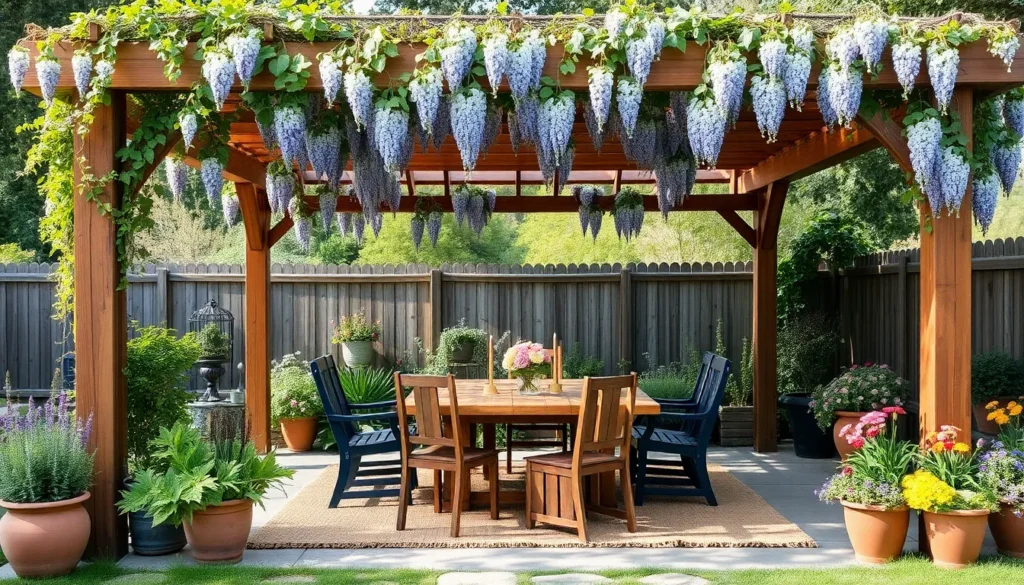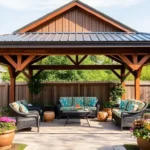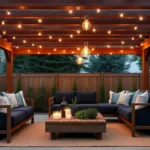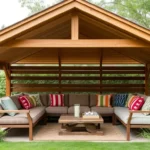Imagine stepping into your garden and being greeted by the charm of a rustic outdoor shelter—a perfect blend of nature’s beauty and human craftsmanship. Whether you’re a beginner just dipping your toes into outdoor design or a seasoned homeowner seeking fresh inspiration, our guide to Rustic Outdoor Shelter Ideas for Your Garden is your ticket to transforming your outdoor space into a haven of relaxation and style.
In this guide, you’ll discover a variety of shelter options that marry aesthetics with function, providing both shade and a delightful focal point for your garden. From cozy pergolas to enchanting gazebos, each idea promises to enhance your garden’s allure while offering practical benefits like protection from the elements and a cozy retreat for gatherings. Get ready to embrace the joy of outdoor living, confident in your ability to create a space that’s both beautiful and functional.
Incorporate Reclaimed Wood Structures
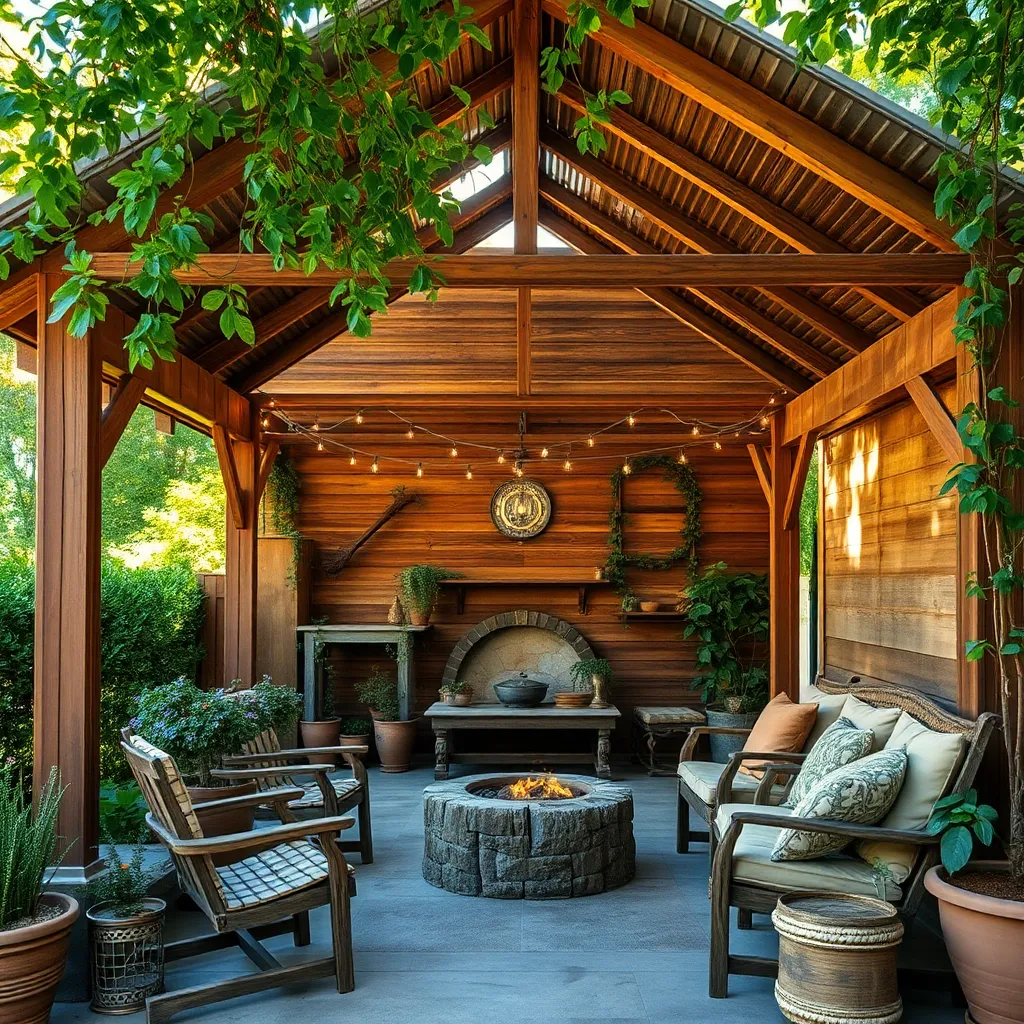
Utilizing reclaimed wood for your outdoor shelter not only adds a rustic charm but also promotes sustainability. Start by sourcing reclaimed wood from local salvage yards or online marketplaces, where you might find weathered barn wood or old pallets. Ensure the wood is treated for outdoor use to withstand the elements. Beginners can start with simple designs like a pergola, using basic tools to assemble a structure with beams and rafters. For a more advanced project, consider crafting intricate latticework or adding a corrugated metal roof to your structure, providing both shade and a distinctive aesthetic.
When designing your reclaimed wood structure, consider incorporating natural elements such as climbing plants or hanging lanterns to enhance the rustic feel. Choose fasteners that match the aged look, like black powder-coated screws, to maintain the overall aesthetic.
- For a simple bench or table, use thick planks and sturdy legs to ensure stability.
- Avoid over-sanding to preserve the wood’s natural character.
This approach not only elevates your garden’s visual appeal but also offers a functional space for relaxation and entertaining guests. By thoughtfully integrating reclaimed wood into your garden, you create a unique and inviting environment that reflects both creativity and environmental consciousness.
Utilize Natural Stone Pathways

Natural stone pathways can seamlessly enhance the rustic charm of your garden while providing a durable and low-maintenance walking surface. Start by selecting stones that match your garden’s aesthetic—common options include slate, limestone, and granite. When laying the stone, ensure the path is at least 3 feet wide to comfortably accommodate foot traffic. Begin by excavating the path area to a depth of approximately 4 inches, then fill it with a layer of crushed stone or gravel to aid drainage.
For a truly rustic feel, consider using irregularly shaped stones that create a more organic look. Arrange them in a jigsaw-like pattern, leaving small gaps for moss or ground cover plants to grow, which can soften the edges and add to the natural appeal. If you’re an experienced DIYer, you might want to experiment with different stone sizes to create a more intricate path design. To ensure stability, make sure each stone is level and secure, tapping them firmly into place with a rubber mallet. Regularly check and readjust the stones as needed to maintain a safe and even pathway.
Add Vintage Metal Accents
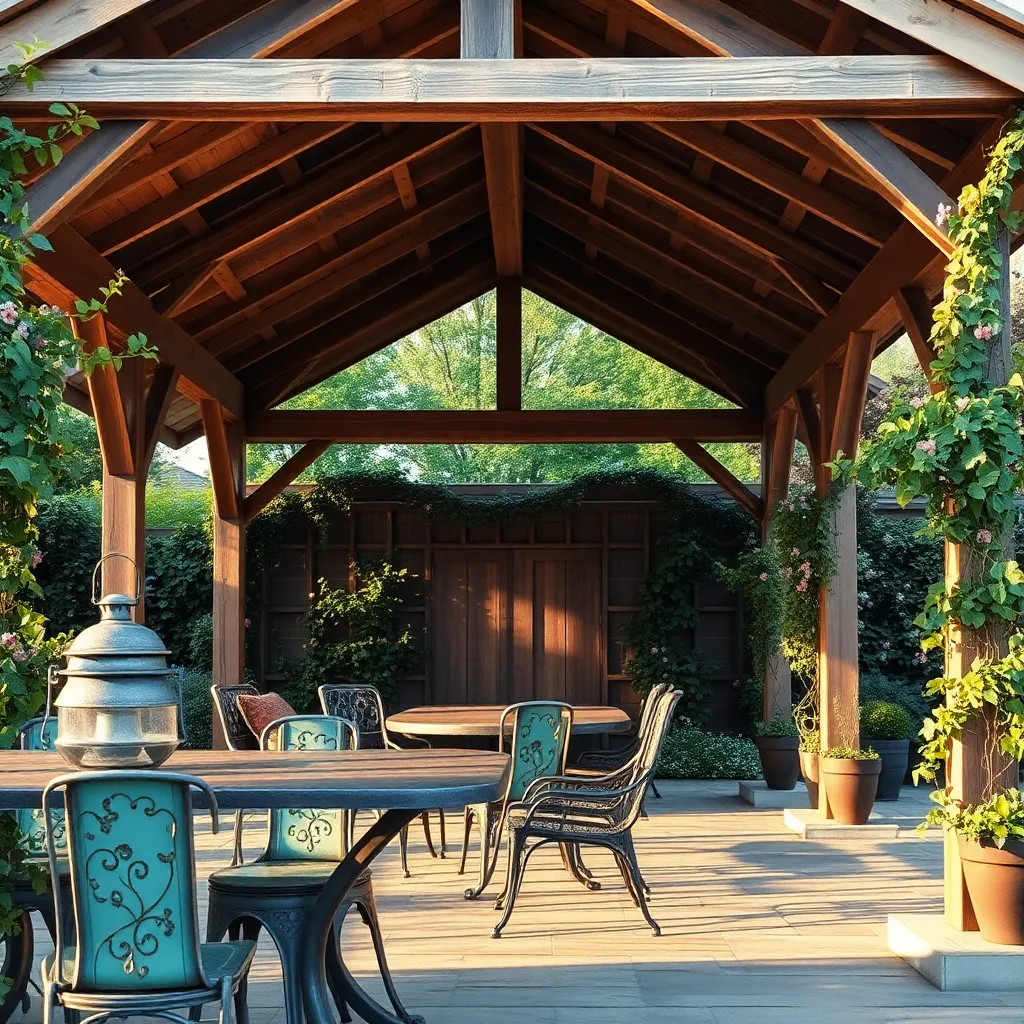
Incorporating vintage metal accents into your outdoor shelter can instantly elevate its rustic charm. Start by considering elements like wrought iron brackets or antique metal hardware for doors and windows. These accents bring a touch of history and can often be found at flea markets or antique shops. For beginners, simply adding a few metal lanterns or a vintage-style weather vane can make a significant impact without overwhelming your space.
For a more advanced touch, consider installing a corrugated metal roof, which not only adds a rustic aesthetic but also provides durability and weather resistance. Pair this with metal trellises or decorative panels to create a cohesive look throughout your garden. When choosing materials, ensure that they are weatherproof or treated to prevent rust, and always measure carefully to ensure a good fit and proper alignment with existing structures. By thoughtfully integrating these elements, you can create a shelter that feels both welcoming and timeless.
Use Earthy Color Palettes

Using an earthy color palette can seamlessly blend your outdoor shelter with its natural surroundings, enhancing the rustic charm of your garden. Incorporate colors such as muted greens, browns, and soft grays to create a cohesive look. For beginners, start by painting your wooden structures in shades like sage or olive, which not only add an organic touch but also help the shelter recede into the landscape.
Experienced gardeners might consider integrating natural materials like stone or brick in their earthy hues to further ground the structure. Advanced tip: Use weathered wood finishes and rust-colored metals to add depth and texture, complementing the natural tones. To achieve a harmonious balance, consider a mix of vertical and horizontal elements, such as a stone foundation with wooden beams or a metal roof, to enhance both aesthetics and functionality.
Include Handmade Wooden Furniture

Handmade wooden furniture can transform your outdoor shelter into a cozy retreat. Opt for durable woods like cedar, teak, or oak, as they naturally resist the elements and age beautifully. Beginners can start with simple projects like a rustic bench or a small side table, ensuring to sand and seal the wood for longevity. For those with more experience, consider crafting a larger dining table or a set of chairs, incorporating details like carved armrests or a weathered finish for added character.
To ensure your furniture complements your rustic theme, focus on simple, clean lines and natural finishes. You can enhance the charm by using reclaimed wood, which adds a layer of history and sustainability to your space. Consider dimensions carefully; a bench should be about 18 inches high, while a dining table typically stands at 30 inches. Get creative with design elements like live edges or mixed wood stains to add unique touches to your pieces. With these tips, your outdoor shelter will not only be functional but also a personalized haven that reflects your style.
Conclusion: Creating Beautiful Outdoor Spaces
As we explored five key concepts of creating rustic outdoor shelters, we discovered that the magic of these spaces lies in their ability to foster connection. From embracing nature to encourage open communication, to crafting intimate corners that inspire meaningful conversations, each idea is a building block for nurturing relationships. We also delved into the importance of designing spaces that promote quality time, utilizing natural elements to create serene environments, and incorporating personal touches that reflect shared values and memories.
Now, take the first step in transforming your garden into a haven of connection by choosing one idea that resonates most with you and start planning its implementation this weekend. Whether it’s a cozy nook for two or a communal gathering spot, let your garden become a canvas for relationship growth.
Don’t forget to save this article for future inspiration. As you embark on this journey, remember that nurturing relationships is an ongoing adventure, where each thoughtful action strengthens your bond. By investing in spaces that bring you together, you’re not just building shelters—you’re building a future of shared happiness and connection. Here’s to creating beautiful, lasting memories in the unique haven you’ve crafted together.

